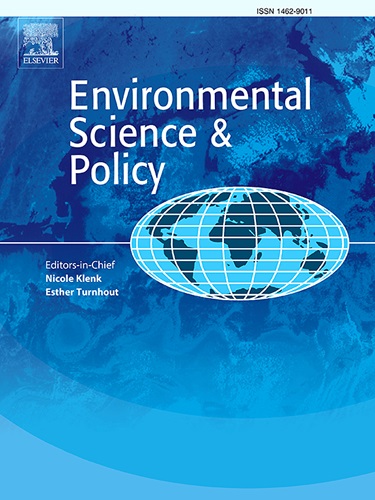Opportunities for optimizing phosphorus inputs in EU agricultural soils
IF 5.2
2区 环境科学与生态学
Q1 ENVIRONMENTAL SCIENCES
引用次数: 0
Abstract
Excessive phosphorus (P) fertilization has resulted in elevated soil P concentrations in some regions in the EU. Legacy soil P imposes a risk for soil functioning and may lead to P losses into the aquatic environment. Recent proposed EU policies aim to optimize P inputs and mitigate excessive soil P concentrations. We present a framework to estimate how much and where P inputs in EU agricultural (cropland and grassland) soils can be optimized. The framework, with assumptions on optimal soil P concentrations and modelled soil P balances, allows calculating how much of the EU agricultural area experiences a build-up or maintenance of soil P concentrations despite having high soil P concentrations. Next, we calculated how much P inputs can be reduced to reach maintenance situation (inputs equal outputs) or to reach optimal soil P concentrations. Assuming optimal soil P concentrations (Olsen) being 20 – 40 mg kg−1, we calculated that current P inputs across the EU can be reduced by 21 % without adverse impacts on crop production, in line with EU policy objectives. The most appropriate strategy strongly depended on the farming system properties and varied across the European regions. The results are discussed in view of current or desired policies limiting P application rates. The framework, with suggested future improvements on uncertainties in data and models, can guide policy makers and land managers to set targets on P application rates, thereby reconciling agronomic and environmental objectives.
优化欧盟农业土壤磷投入的机会
过量磷肥导致欧盟部分地区土壤磷浓度升高。遗留土壤磷给土壤功能带来风险,并可能导致磷流失到水生环境中。最近提出的欧盟政策旨在优化磷投入和减轻土壤磷浓度过高。我们提出了一个框架来估计欧盟农业(农田和草地)土壤中磷的投入可以优化多少和在哪里。该框架假设了最佳土壤磷浓度和模拟土壤磷平衡,可以计算出尽管土壤磷浓度很高,但有多少欧盟农业地区经历了土壤磷浓度的积累或维持。接下来,我们计算了可以减少多少磷投入以达到维持状态(投入等于产出)或达到最佳土壤磷浓度。假设最佳土壤磷浓度(Olsen)为20 - 40 mg kg - 1,我们计算出整个欧盟目前的磷投入可以减少21 %,而不会对作物生产产生不利影响,符合欧盟的政策目标。最合适的策略在很大程度上取决于农业系统的特性,并因欧洲地区而异。从限制磷施用量的现行或预期政策的角度对结果进行了讨论。该框架连同对数据和模型的不确定性提出的未来改进建议,可以指导决策者和土地管理者设定磷肥施用量的目标,从而协调农业和环境目标。
本文章由计算机程序翻译,如有差异,请以英文原文为准。
求助全文
约1分钟内获得全文
求助全文
来源期刊

Environmental Science & Policy
环境科学-环境科学
CiteScore
10.90
自引率
8.30%
发文量
332
审稿时长
68 days
期刊介绍:
Environmental Science & Policy promotes communication among government, business and industry, academia, and non-governmental organisations who are instrumental in the solution of environmental problems. It also seeks to advance interdisciplinary research of policy relevance on environmental issues such as climate change, biodiversity, environmental pollution and wastes, renewable and non-renewable natural resources, sustainability, and the interactions among these issues. The journal emphasises the linkages between these environmental issues and social and economic issues such as production, transport, consumption, growth, demographic changes, well-being, and health. However, the subject coverage will not be restricted to these issues and the introduction of new dimensions will be encouraged.
 求助内容:
求助内容: 应助结果提醒方式:
应助结果提醒方式:


